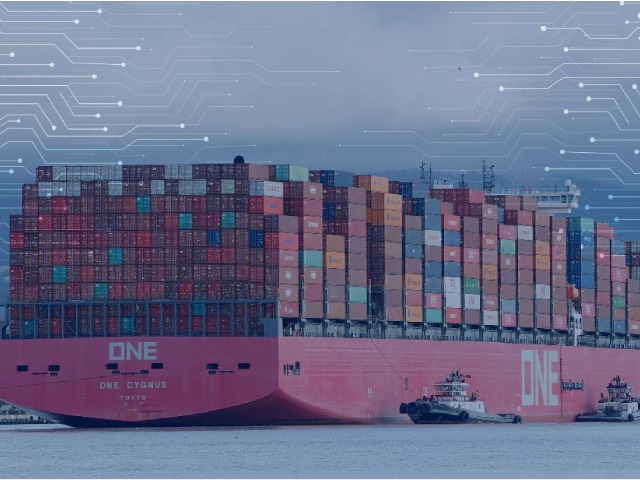Picture this – a fluctuating cargo demand, the desperate need to remain profitable and ‘make hay’ while the sun shines, and a finite supply of shipping containers that are dispersed across the planet. This is what leaders in liner organizations are challenged with on a daily basis.
Add to this the stress of knowing there must be a better way to run operations than by expecting teams to use outdated manual planning systems, that you’re sure are actually costing your business money.
But who has time and capacity to slow down, look up, and adopt new solutions? The answer? We believe forward-thinking liner organisations are doing just that.
What happened to all the shipping containers?
But first, let’s backtrack to the start of the shipping container crisis.
Back in 2020, a short two months into the pandemic, China was able to restart their factories and production, while the rest of us were still bolted up indoors, implementing restrictions, and closing factories. This made China the only viable candidate to export to the entire world.
As a result, the bulk of the containers in Asia were shipped out to Europe and North America. However, the empty containers were not able to return quickly enough, resulting in container shortages where they were needed most, plus space problems, logistic delays, and supply chain disruptions.
As restrictions eased and manufacturing resumed the world over, the container shortage did not disappear. Rather, it led to hikes in freight rates, increased manufacturing costs, higher container leasing rates and a spike in the cost of new containers, as every manufacturing nation required empty containers in order to maintain its exports.
Today, as any business house would do, liner organisations are taking advantage of this high-demand season to increase profitability, however, lack of visibility into future demand and supply, is hampering their decision-making ability around purchase, sale, lease or sub-lease.
Solverminds shines an AI light into the darkness
Those in the maritime sector already know about Solverminds’ shipping ERP capabilities, and how they use technology to understand and streamline every touch point of the liner shipping operation towards greater productivity and profitability.
Therefore it comes as no surprise that they have risen to the occasion yet again, and launched a solution to the world’s empty container repositioning conundrum: OptiBox.
What’s in the box?
OptiBox comes as a well-timed gift to the container shipping industry, just in time for Christmas.
If you unwrap it you will find inside a very clever mix of Optimization algorithms, artificial intelligence (AI), and Time Series forecasts. Plus, because OptiBox is backed by SEDGE technology, it includes data cleansing, data munging, statistical analysis, data exploration, seasonal trend and predictive analytics functionality.
For those of us who are not data scientists, it is sufficient to say that the OptiBox automatically, easily, and efficiently balances equipment inventory with a few simple clicks. But, as with all thoughtful gifts, there’s even more to it.
Automated, optimized container repositioning, and then some “what if’s”
It also provides forecasts, identifies seasonal patterns and disruptions, identifies optimal container stock based on demand, and automates route generation for all port pairs.
It also facilitates “what-if” scenarios so that decision-makers can see outcomes to multiple scenarios beforehand, and make the most favorable decision based on data.
OptiBox is the gift that keeps on giving
It’s easy-to-use AI-powered platform in the cloud gives teams a global view of container imbalances and provides repositioning plans to best-contributing cargo. Its evacuation plan results in lowered empty container storage costs, while still giving operators control over these costs.
It improves asset utilization through reduced container idle time, and identifies opportunities of on way lease boxes with other box lease options, effectively reducing bloated stock inventory levels.
OptiBox also reduces costs in several ways:
- It lowers maintenance and repair (M&R) costs by identifying depots with least M&R costs.
- It minimizes the base on/off-hire costs by identifying the most appropriate location where containers can be dropped off or picked up.
- It allows decision-makers to make informed global decisions of repositioning, thus bringing the overall cost of repo down
Faster, more accurate decision-making
Because Solverminds know that data scientists and analysts are a rare and expensive resource, they infuse the know-how and insights of a team of data experts who have worked years into the OptiBox’s capabilities. That means you get accurate insights quickly, freeing up your ops team to focus on other productive activities.
OptiBox facilitates accurate budgeting by estimating repositioning costs in advance for best-cost control purposes, and forecasts supply and demand conditions in multiple locations at once.
It also supports your decision-making process by analyzing variances and making effective, proactive decisions for future optimal repositioning, as well as on/off-hire, sale or purchase decisions, from which a repositioning work order can be created.
OptiBox auto-computes imbalances and displays data visually and geographically for global reposition planning and decision-making.

Dynamic routing and cost calculation
OptiBox identifies all the cross-joins between surplus and deficiencies with all possible combinations, and once a port pair is identified, it generates the best route within the existing restrictions.
The total costs involved are then generated, such as on-hire and off-hire cost, load cost, local trucking cost (origin and destination), feeder cost, haulage cost, depot handling cost (origin and destination), discharge cost, and trans-shipment load costs.
The right conclusion
Could OptiBox be the solution to the world’s current container shortage crisis? It doesn’t take a genius to see how OptiBox gives clarity and control to container shipping organizations for cost-effective empty repositioning.
Solverminds’ track record of consistently providing the shipping industry with intuitive AI-powered solutions, backed by their extensive domain expertise, is once again established in this elegant, easy-to-use solution to the world’s container imbalances challenge.






































